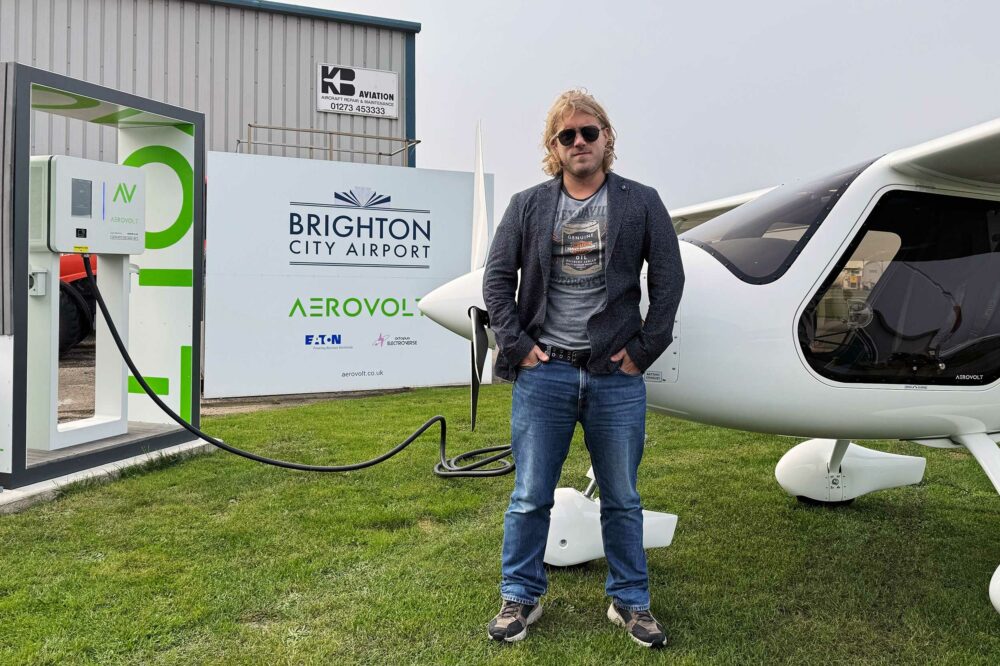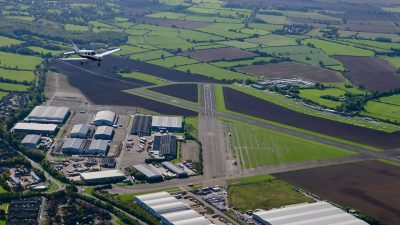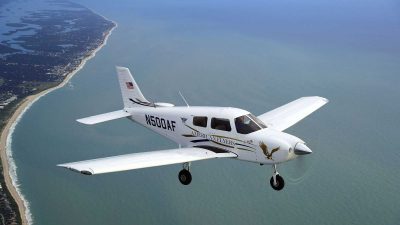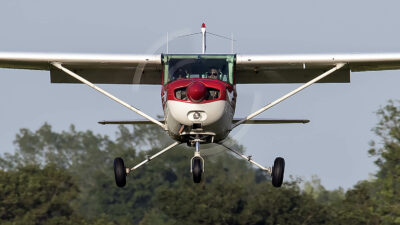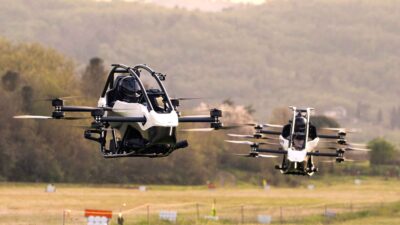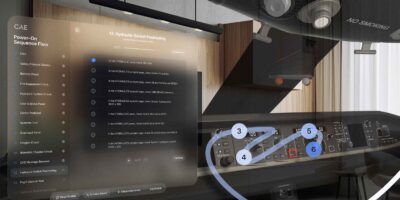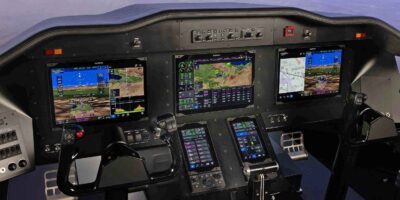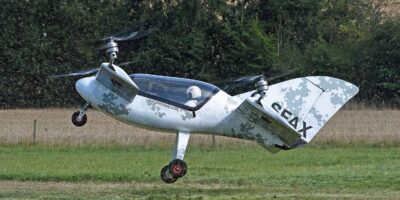Flying an electric aircraft is a way off for most pilots but, bit by bit, the infrastructure for a charging network is being established.
One startup, Aerovolt, after a slow start in 2022 and early 2023, is now looking at a possible 40 aerodromes with charging facilities by the end of 2024.
Just recently, Aerovolt flew its Pipistrel Velis Electro electric two-seater from Sandown, where it was charged, to Shoreham, for a top up.
Philip Kingsley-Dobson is the founder of Aerovolt along with his twin brother Alan, and now CEO (Alan is COO). Phil said, “Aerovolt finally did its first smart charging test over the weekend from Sandown to Shoreham.
“The goal, aside from re-positioning the aircraft, was to test the remote transaction logging of the charging sessions. After a couple of scripting tweaks, the system worked 100% as expected with the background operations.”

A recent flight from Sandown to Shoreham tested Aerovolt’s payment system
Aerovolt has partnered with EATON, a Swiss-based power management company, and the installations so far have all used their chargers rated at 22kW. Another batch of 18 chargers have been built by EATON for continuing the rollout into 2024, and larger 44kW chargers are being built for a scheduled delivery next Spring which will then start to be installed.
Aerovolt has its own payment system, called Squadron, but is also about to go live with Octopus Electroverse, a charging network app that’s well known in the electric car world. Octopus has already updated its app ready to take the new aircraft connector and vehicle type. Integration work between Aerovolt and Octopus Electroverse has been underway for about 10 weeks, but a production test is scheduled for the first week of December.
Vitally, Aerovolt’s installations will always recharge an aircraft regardless of any issues with the payment system.
“It will charge anyway and it just invoices you, ” explained Philip. “What we didn’t want was any kind of payment interface that could potentially go wrong that’s relying on another third party connection. It’s a straightforward system and once your ID card is authorised, it literally just works and worries about the payment later.”
This gets around any issues such as poor phone reception, or not having the correct app setup, or even if you’ve left your wallet at home. “You can call us and we can get you out of trouble,” said Philip.
Two imminent installations, at Dunkeswell in Devon and Henstridge in Somerset, will be combined with chargers for electric cars. That’s expected to accelerate interest with more revenue opportunities for both Aerovolt and the airfields, who take a cut of the electricity sold.
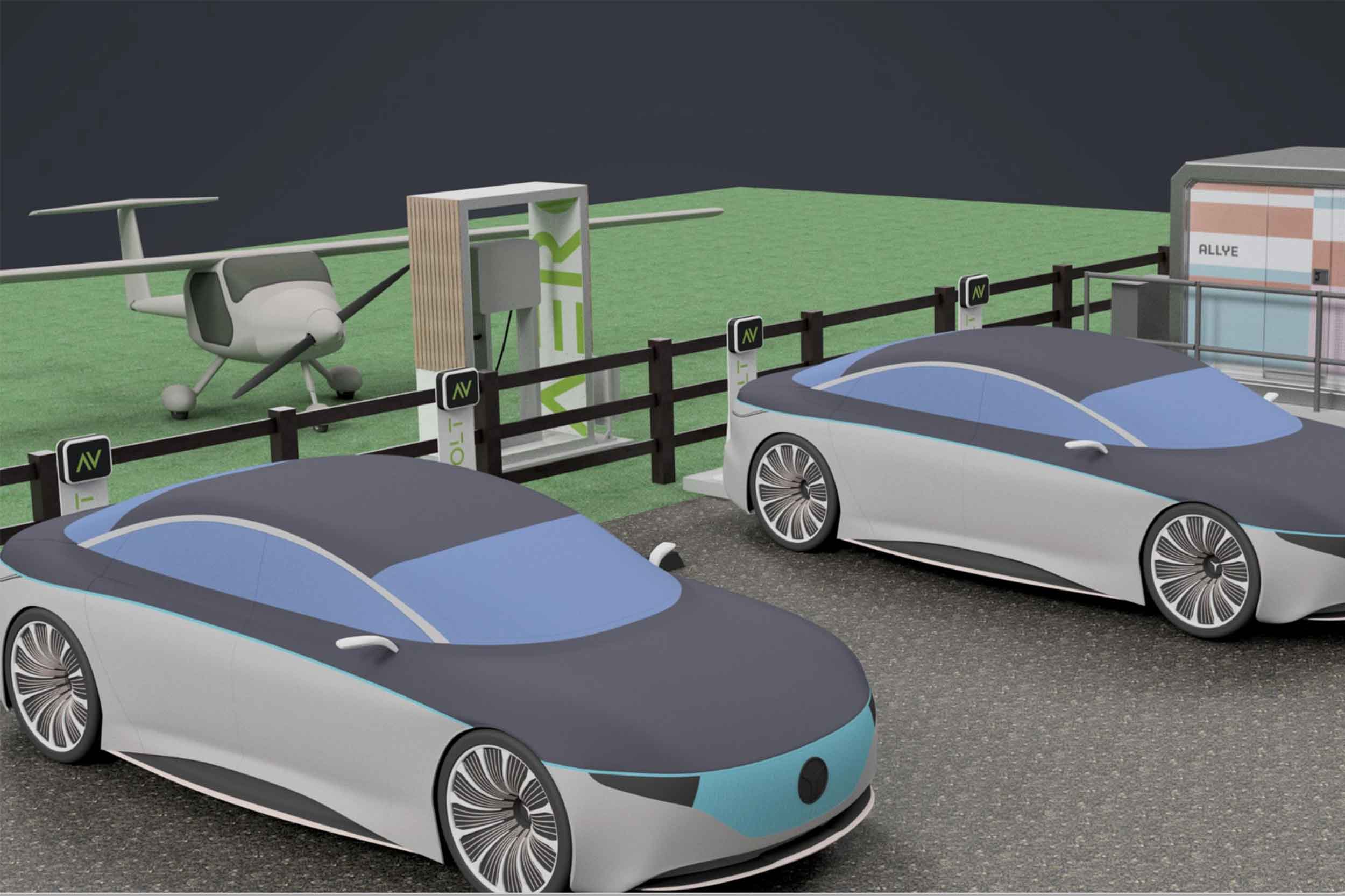
New installations at Dunkeswell and Henstridge will see chargers installed both airside for aircraft and landside for electric vehicles
‘I just wanted to know about the charger’
“I had a bit of an interest in electric planes and went to see Deepak’s [Deepak Mahajan, Pipistrel UK agent] Pipistrel Velis Electro at the end of 2021. He showed me the mobile trolley charger that came with it and I thought people aren’t really going to like that and it won’t be a long term solution, especially for public charging.
“I saw a company called Green Motion in Switzerland who made this smart charger for the aircraft, and tried to get in touch with them. To be honest it was a very slow start because I didn’t have any money or anything, I just wanted to know more about the charger.

The Aerovolt team, (left to right) Guy Haydon, Alan KD and Phil KD, alongside Francois Randin and Laura Leoncini from EATON. They met in Lausanne, Switzerland to discuss the smart charger rollout in the UK
“Then I started working on a back-end system, writing code in evenings and weekends, to manage bookings of aircraft with charging alongside it, and also to pay for flight hours, charging sessions using multiple different user accounts. I started that in February 2022 and I was trying to get government help with funding and institutional grants but there just wasn’t any interest at the time.
“Nothing really happened in 2022, it was just a kitchen table project, until literally on the 27th of December, we got some small investment. I said to EATON I’d like to place an order for some chargers, as it turned out the largest order ever placed for aircraft chargers.
“It took a few months to get the first chargers due to a worldwide semiconductor shortage affecting the components industry, and given the timing, we then decided to launch at the Royal International Air Tattoo 2023. Shortly after the launch we started installing, and since then there’s been a lot more interest because things are actually real. We have real chargers at aerodromes, you can tap your card and charge, and we have an accounts and back end system which is fully functional.
“We’re now working closely with EATON on this charger rollout, and this new era of electric aircraft brings different challenges and problems to solve not normally known to the aviation industry. There are other behind the scenes systems we’ve started developing with flight planning, information management and even ATIS enhancements/upgrades that integrate charger information for pilots, which has already been prototyped.”
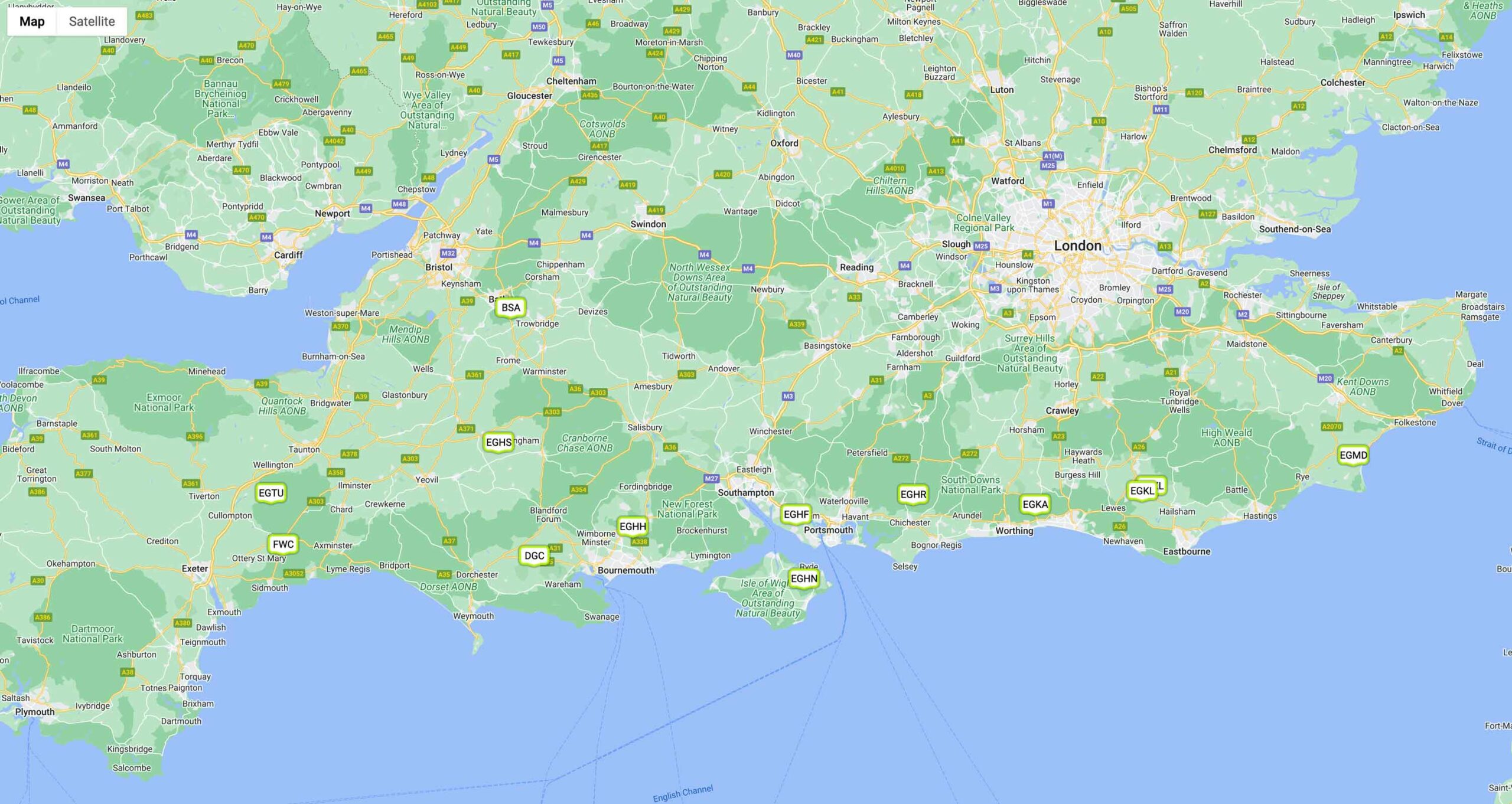
Aerovolt’s network is rapidly expanding though it’s concentrated in the south of England for now
Battery tech and faster chargers
Pipistrel has already uprated the electrical system on the Velis Electro and its second generation batteries give more performance for longer than when the aircraft was launched in 2020.
Philip believes there’s much more to come. “Two years down the line, 700wH per kilo will probably be available. At the moment they’re around 250wH – 300wH per kilo. You’ll soon have a Velis or whatever aircraft with a two hour range on a 60KW battery, but is the same weight as the current batteries.
“The rate of development with battery tech is quick. The car industry is helping a lot with that. In China, where they’ve achieved 700 watt hours per kilo, that’s going to filter down at some point, maybe in 18 months or two years time. But by the time that higher capacity battery is installed in an aircraft, 1000wH per kilo would probably have been achieved.”
Although the Pipistrel Velis Electro is still the world’s only certified electric aircraft, at least two more aircraft are on the way. There’s the Bristell B23 Energic and Diamond Aircraft eDA40. Both aircraft are based on existing, proven airframes and already have prototypes flying. Both are working with reputable propulsion developers. Bristell is using the 100kW liquid-cooled electric propulsion system developed by H55, the Swiss offshoot of Solar Impulse. Diamond Aircraft has partnered with Safran to use its 125kW air cooled ENGINeUS unit, with batteries from EPS.
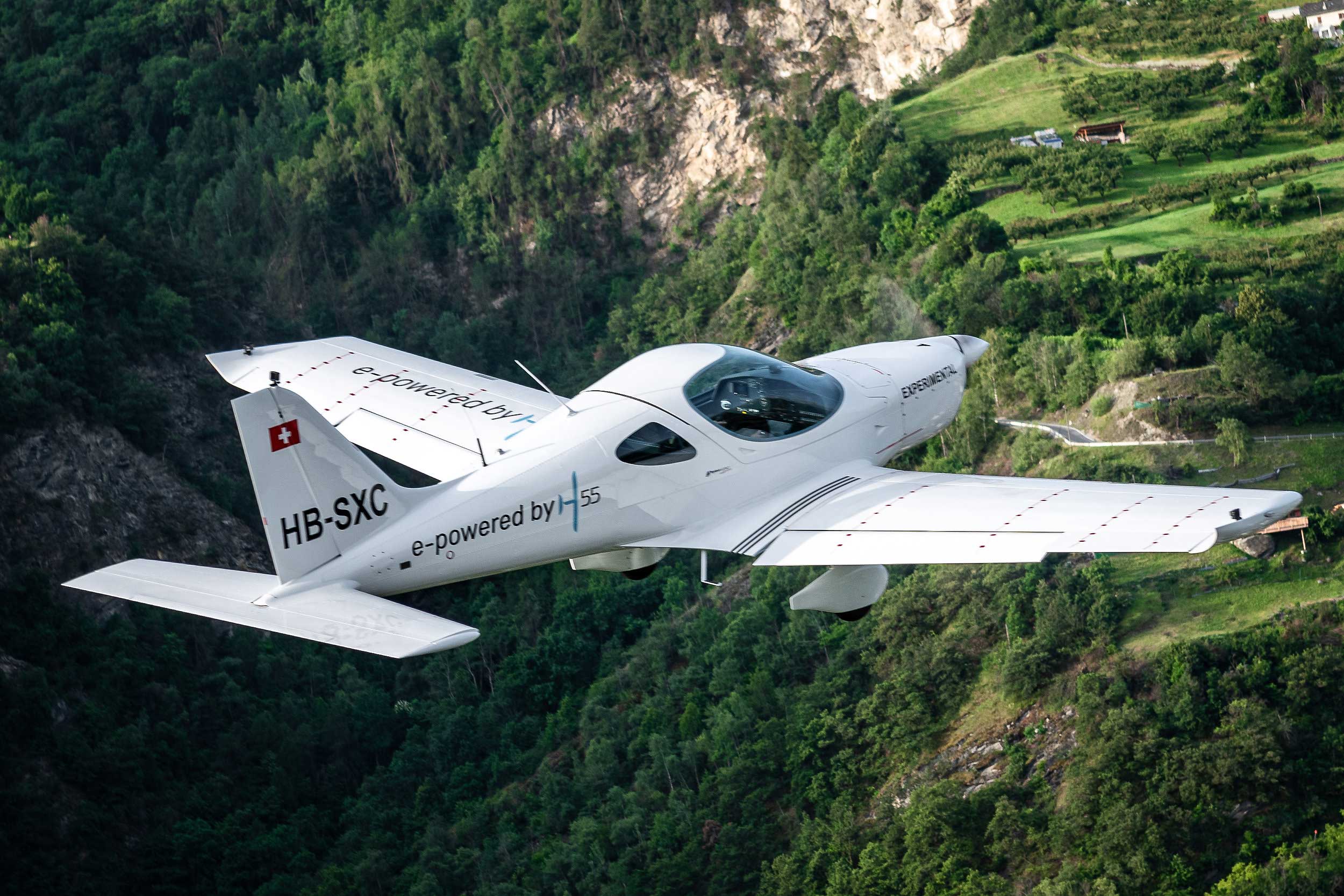
Bristell’s B23 Energic is another electric aircraft on its way, using a propulsion system developing by H55

As is Diamond’s eDA40 which has a Safran motor and EPS battery
So with more aircraft on the way and the Pipistrel being upgraded with more powerful batteries, the infrastructure is all important. But what about the problems we’ve heard about the substantial connection to the national grid? Especially with some airfields being in the back of beyond.
There is an answer that’s already in use at some electric car charging stations. That’s a big battery at the charging station to spread the load. This system is already part of the Aerovolt installation.
“We have partnered with a new company called Allye, who have developed an energy storage solution ideal for Aerovolt,” said Philip.
“It’s a 320kwh battery built from recycled Tesla batteries that can trickle charge then deploy at up to 200 amps. This works in place of an extremely expensive grid connection and facilitates all the current charging needs with capacity for much higher power chargers too. Long term grid upgrades will be needed but this is a good option for initial airside power.”
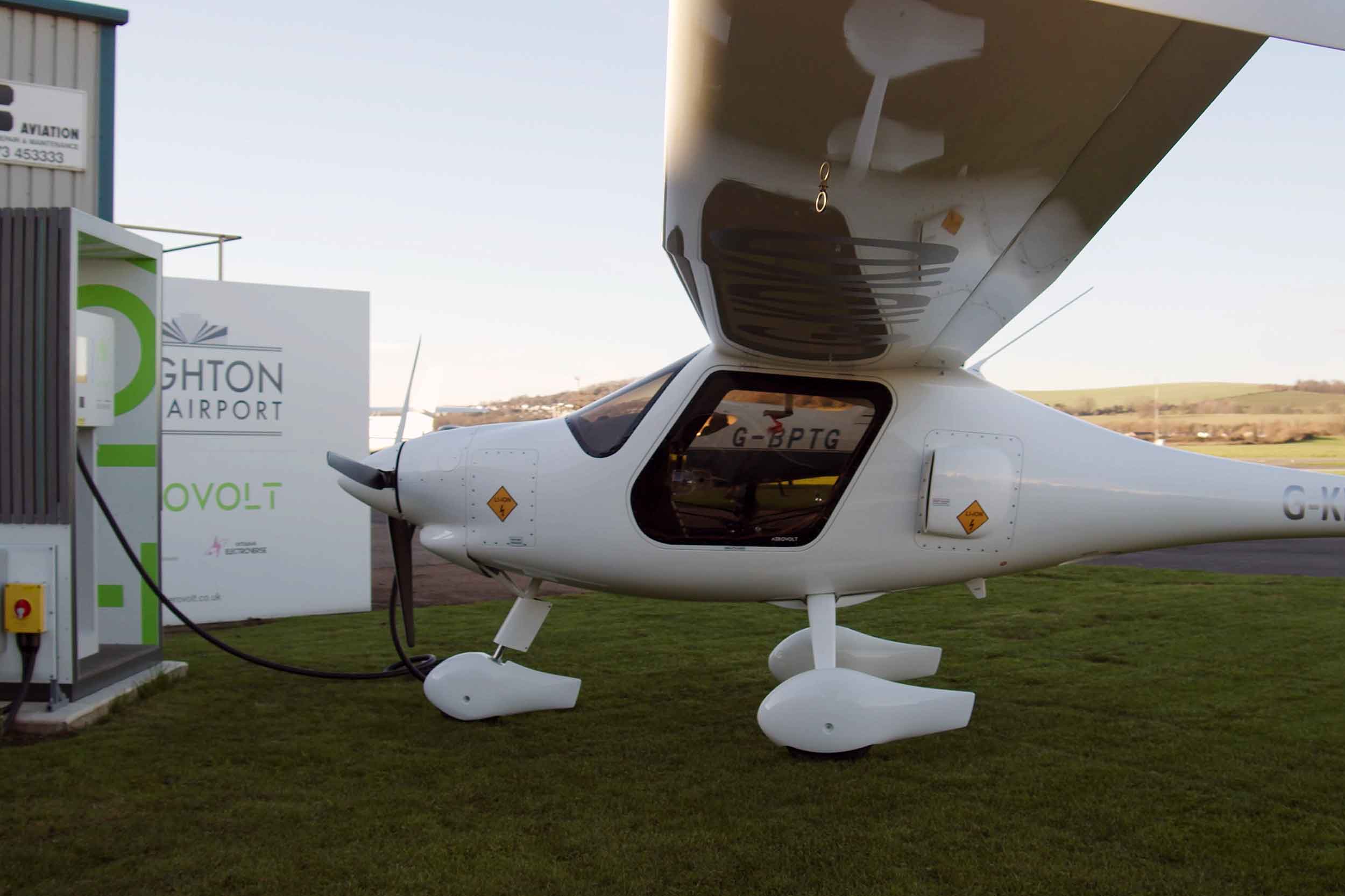
Charging the Pipistrel Velis Electro on arrival at Shoreham
Standardising connectors and systems
There’s also further proposed standardisation coming in for the connectors that’s similar to car connectors. They use what’s known as a CCS (Combined Charging System) which is a faster DC charging system than either the older Type 2 AC connector, or the current Chinese GB/T EV used on the Velis.
“The charging systems that we have are smart chargers, so it is quite easy to adapt to a different kind of protocol, firmware or connector. So there’s a plan in place for this with ourselves and EATON already.”
That’s not all there is to charging of course, and despite the battery system, if multiple aircraft (or vehicles – it’s the same for car chargers) connect at the same time, the available grid load allocated for the chargers sometimes has to be shared. Four aircraft all charging on individual 44kW systems may not always get the fastest charging speed at some sites.
That’s going to have an impact on flight planning, if you have to spend longer on the ground unexpectedly or unplanned, and that’s where the CAA has taken a keen interest. Aerovolt is taking part in CAA workshops starting in December to take this further.
For the time being Aerovolt is concentrating its installations on the south of England to build a network that’s close enough for the current range and endurance of electric aircraft. But as those performance figures rise, and aircraft are sold into other areas of the country, the network will grow. And then there’s the whole other markets of electric flying machines such as drones and eVTOLs – both will need an electric charging infrastructure as well.

eVTOLs, such as the eHang 216 air taxi, will also need a charging infrastructure


